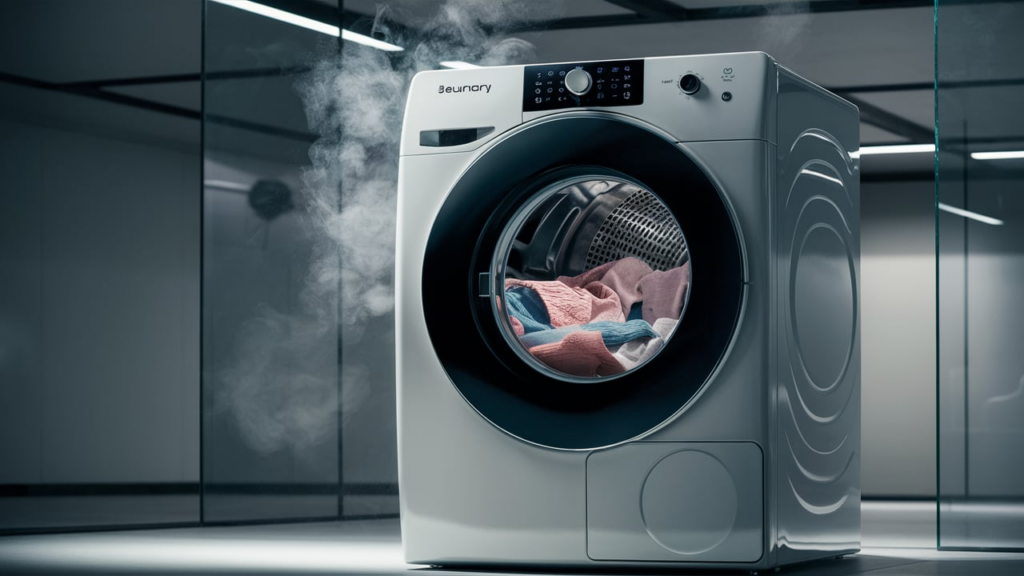
If your GE dryer only operates while the start button is pressed and stops as soon as you release it, you’re dealing with an issue that can be both inconvenient and frustrating.
The good news is that diagnosing and repairing this problem is typically straightforward and can often be done without professional help. Here’s a comprehensive guide to help you address the issue.
Common Causes of This Issue
When your GE dryer only runs while the start button is held, the problem is often related to one of these components:
- Start Switch Malfunction: The start button triggers the motor to run. If the switch inside the button fails, it may not maintain the connection needed to keep the dryer running.
- Motor Relay Issues: The motor relay is responsible for keeping the dryer’s motor running after the start button is released. A faulty relay may cut the connection, causing the dryer to stop.
- Defective Control Board or Timer: For models with a timer or control board, a malfunction in these components could interrupt the operation. Wiring issues or burned-out circuits in the control board can prevent the dryer from staying on.
Tools You’ll Need
- Phillips screwdriver
- Multimeter
Safety Precautions
Before starting any repair work, prioritize safety by following these precautions:
- Disconnect Power: Turn off and unplug the dryer or switch off its circuit breaker to avoid the risk of electric shock.
- Cool Down Time: Allow the dryer to cool completely if it has been recently used.
- Proper Multimeter Use: Avoid testing live voltage unless you are experienced in safe multimeter handling.
- Take Your Time: Work carefully to minimize the risk of accidents or damage.
- Well-Lit Workspace: Your work area must be well-lit for better visibility and access to components.
- Keep It Tidy: Maintain a clean and clutter-free workspace, and keep children and pets away while you work.
- Dry Hands Only: Never work on internal parts with wet hands, and the work area must be dry.
- Review the Manual: Check the user manual for any specific safety or installation instructions related to your appliance or replacement part.
- Handle Parts Carefully: Use minimal force when handling or removing components to avoid damaging the appliance or injuring yourself.
- Protective Gear: Wear insulated work gloves to safeguard your hands from sharp edges and debris.
- Safe Wire Handling: Avoid direct contact with exposed wires or terminals. Use non-conductive tools or insulating gloves if you need to handle wiring.
- Document Connections: Take photos or notes of wiring connections before disassembly to make reassembly straightforward.
How to Troubleshoot a GE Dryer
Accessing the Inside of the Dryer
- Unplug the dryer from the power outlet.
- Remove the two screws at the top of the front panel, just behind the door, using a Phillips screwdriver.
- Lift the top panel slightly to clear the console legs.
- Pull the front panel forward to remove it.
Inspecting the Dryer Belt
- Locate the dryer belt and inspect it for slack or visible damage.
- Replace the belt if it is loose or broken.
- If the belt is in good condition, proceed to the next section.
Checking the Belt Switch
- Locate the belt switch near the motor and idler pulley arm.
- Set a multimeter to continuity mode.
- Place the multimeter probes on the belt switch terminals.
- Move the idler pulley to the position it would occupy with the belt on.
- Check for a beeping sound from the multimeter indicating continuity.
- Replace the belt switch if no continuity is detected.
Testing the Motor
- Disconnect the wires from the motor terminals if the previous steps did not reveal the issue.
- Set the multimeter to resistance mode (Ω).
- Place the multimeter probes on terminals 5 and 4 of the motor.
- Verify the resistance is between 4.1 and 4.9 Ohms.
- Engage the centrifugal switch on the motor.
- Check that the resistance changes to approximately 4 Ohms.
- Replace the motor if the resistance readings are outside these ranges.
Reassembling the Dryer
- Install the drum and belt, making sure the belt is firmly positioned on the motor pulley.
- Reconnect the door switch wires.
- Secure the front panel with the screws.
- Slide the top panel back onto the console legs.
- Rotate the top panel down and fasten it with the screws.
- Plug the dryer back into the power outlet.
When to Consider Professional Help
While many issues can be resolved with basic tools, some situations call for professional assistance. Here’s when to contact an expert:
- Electrical Complexity: If the repair involves intricate electrical work or live voltage testing, calling a technician is the safest option.
- Warranty Concerns: If the dryer is under warranty, attempting repairs on your own could void the coverage. It’s worth checking with the manufacturer first.
- Persistent Problems: If the issue continues after replacing suspected faulty parts, there may be an underlying cause requiring specialized diagnostics.
Wrapping things up, dealing with a GE dryer that quits as soon as you let go of the start button doesn’t have to be a headache. Whether it’s a simple fix like replacing a belt or something a bit more involved like checking the motor relay, you have the knowledge to tackle the problem yourself.
With the right tools and a bit of patience, you might save time and money by handling it on your own. If things get tricky or you’re not feeling confident, reaching out to a pro is always a smart move.
